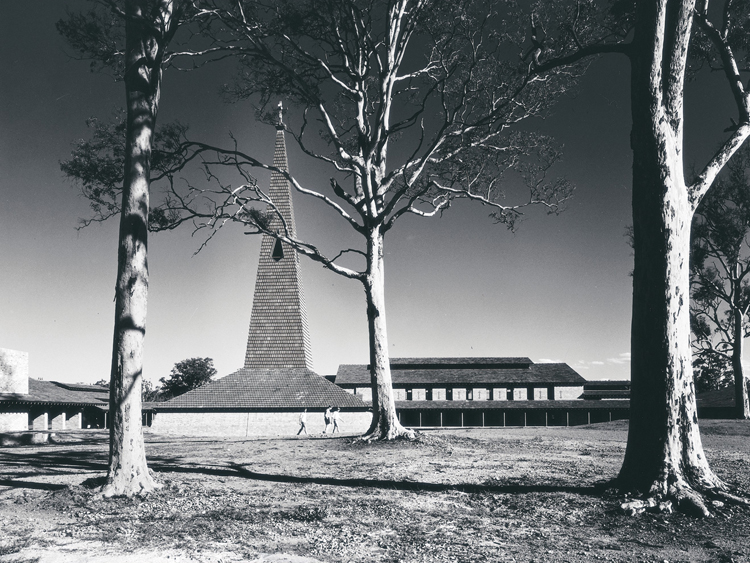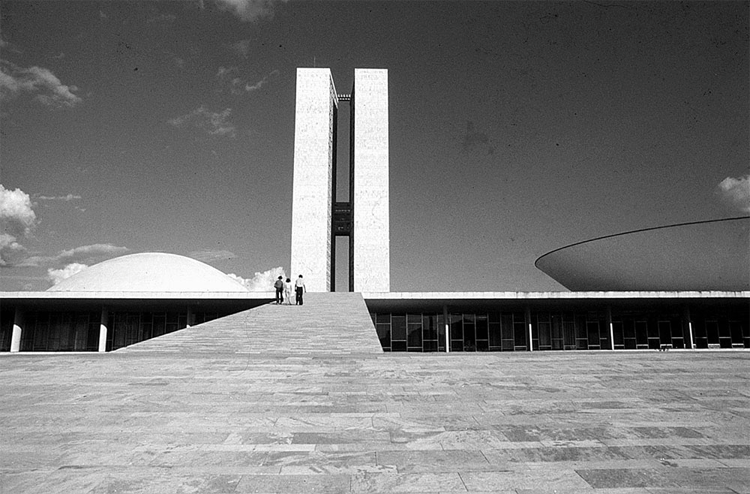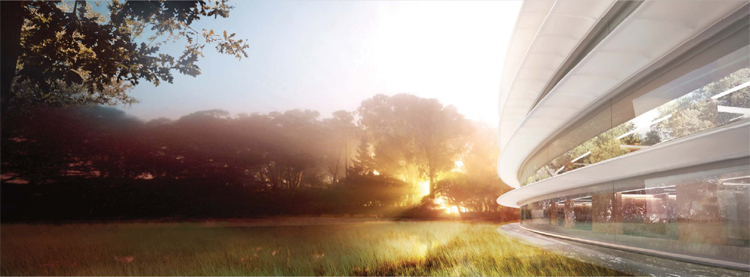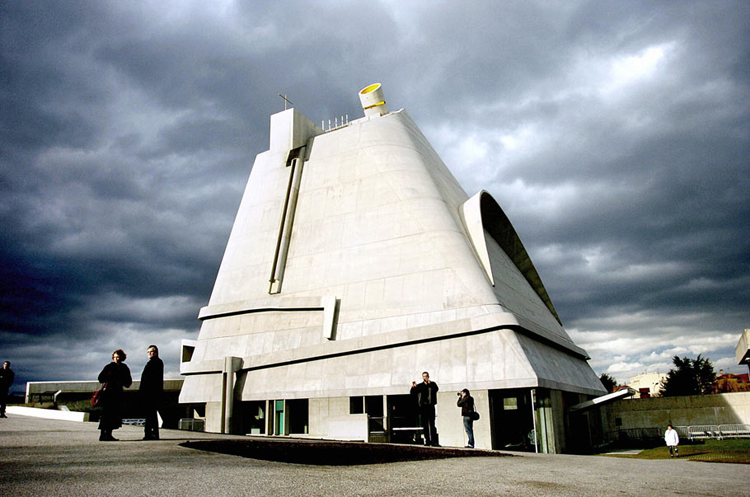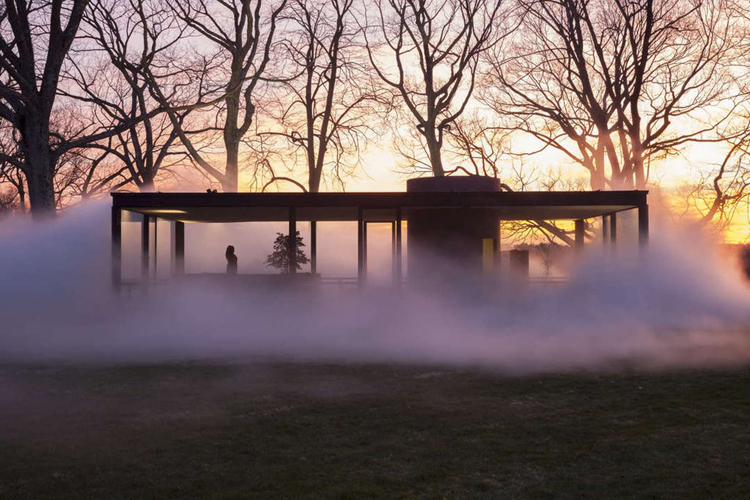
Designed by Philip Johnson in 1949 these classic modern houses are impossible to ignore and ultimately important to the huge shift to modernism at the time. It was once considered the most famous house in the US, located in Connecticut on a 47 acre estate, accompanied by 13 other pavilion like structures all designed by and for Johnson and all very different in concept. The Glass House was inspired by Mies’ Farnsworth House but this does not seem to bother many historians, they are both high on the list of 20th century buildings of great importance. Interestingly, construction began on Farnsworth before Glass House and was completed later. Johnson also curated an exhibition of Mies’ work and included a model of Farnsworth, he then began work on his own. Rumour has it; Mies was not happy. I’ll add the Farnsworth house here soon.
Known for its design as a pavilion to view the surrounding landscape the house lived through some amazing times. Johnson and his partner David Whitney were extraordinary networkers and serious party guys. They hosted guests such as Andy Warhol and many local and state officials. Apparently a deer once wandered in through a door then it leapt out through a large pane shattering the glass, pretty exciting stuff.
Jorge Otero-Pailos, an artist / architect / preservationist was asked to consider and preserve the history of the great building in 2008 during some restoration works. He came at it from a completely different angle, he noted the house had no openable windows and deduced the heavy parties were to blame for a patina of smoke stains on the ceiling. He peeled these back, analysed them and then recreated a series of fragrances reflecting 1949, 59 & 69 that include hints of smoke, perfume and upholstery from their respective times. The process is known as Olfactory Reconstruction, I have swatches of these in my hand as I write this and I’m getting a whiff right now, it’s weird but also very interesting.
The Glass House is open to the public. The image above was created by artist Fujiko Nakaya, titled Veil 2014 via ArchDaily link to that article here.
